
Having fresh peaches from your own backyard is a delicious way to save on your yearly grocery bill. They are great fresh and can be dried and canned. Even jams made with peaches can be a great way to make the most of growing peaches in Arizona.
When to fertilize peach trees
You should never plant your peach trees in low areas that are known to be frost pockets. If you are wanting to delay your blooms in areas that have frequent spring frosts, then you should plant on the north side of a building. The building will be able to shade the tree in late winter, which delays the bloom, but allows the tree to get the needed sunlight of summer. Peaches tend to do quite well in sandy, well-drained soils. You should plant the trees in the spring so that it will be well established by winter. Be sure that you are spacing your trees 15-20 feet apart.

Fertilizing the peach tree
You should fertilize your young trees with a fertilizer that contains nitrogen like a pound of 10-10-10 or an equivalent after it has been planted for 6 weeks. During the second year, you should add three-quarters of a pound of fertilizer in spring and then the same amount during summer. Seeding your lawn around the tree with grass and white clover or with crimson clover or bird’s foot trefoil will give your tree extra nitrogen. Trefoil and clover are nitrogen fixing legumes. Once your tree begins to bear fruit, it won’t grow as fast and won’t need a lot of nitrogen. During the third year and up, you will need only a pound of nitrogen yearly, and it should be applied during spring when the growth is starting. Slowing the growth of a tree is a great way to ensure that it will be stronger, hardier in the winter, and live longer. Don’t apply any fertilizer within 2 months of the first fall frost and let your lawn grow up around the tree in late summer/early fall. Be sure that you don’t apply a lot of water during this time and don’t prune your tree in the fall.
Caring for your peach tree
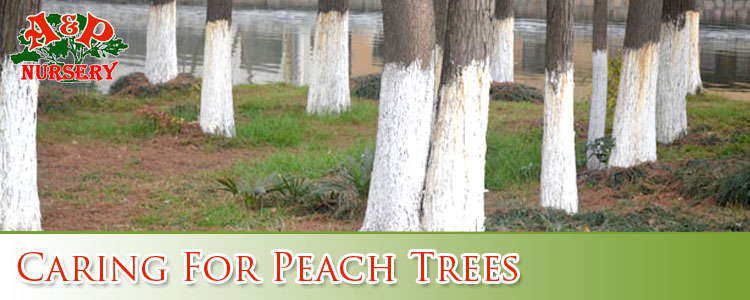
In order to keep your tree from getting winter sun-scald, you may paint the tree trunk white. Be sure to remove the old mulch from the base in order to avoid it attracting any type of rodents and then be sure to place mouse guards around the trunk as needed. During late winter and early spring, once the ground finally has been thawed, you should place heavy layers of mulch around your tree to ensure that the soil remains cool which in turn delays blooming.
Pruning Peach Trees
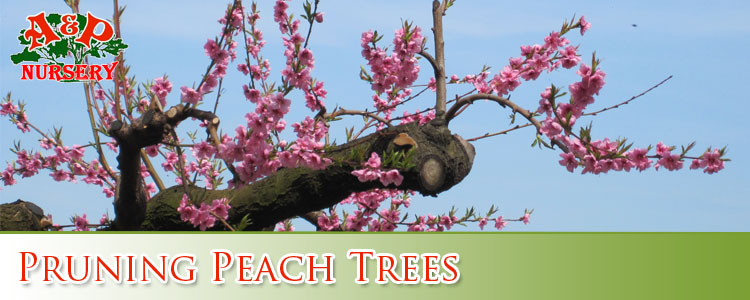
You can train peaches to open in the center and then prune them annually. Be sure that you remove the diseased or dead wood first, then prune the branches that are drooping down or growing straight up. Nectarines and peaches will only bear fruit from lateral buds on year old branches. They will need to be pruned yearly during dormant season to stimulate fruit wood growth and to keep the fruit bearing branches closer to the trunk. Whenever the bloom is heavy, you should lightly head back the longer fruit bearing branches in order to reduce fruit load and prevent breaking branches. The summer pinching will help to control your tree size, which encourages the formation of the next year buds and will improve the quality of fruit. Whenever the tree is around 5-6 years old, remove the wood that has been produced in the last 2 years. This will keep your tree from getting too tall and will restore growth to older wood.
IN about 4-6 weeks after the bloom, you should thin out some of the excess fruit if you have a lot of peaches. Remove and then destroy the fruit that has signs of insect punctures. Thin the fruit so that they are spaced between 6-8 inches apart on the branch. The left over fruit will be sweeter and larger than they would have been without thinning the fruit.
Harvesting and then storing peaches

You should never shortchange yourself by picking the peaches way too early. The reward for all your hard work is special, home grown flavors of a tree ripened fruit and not one that has to sit on your kitchen windowsill. If there is a bit of green on your peach, then it isn’t ready to be picked. A peach should easily come off the branch with just a slight twist and nothing harder than that. Be careful while you are harvesting because many types of varieties such as the Champion and Reliance are soft fleshed and will bruise quite easily when they are ripe. In order to store your peaches, be sure that they are in a cool, dry place to prevent them from ripening further.
Peach Trees For Sale in East Phoenix Valley
If you want to get the most out of your peach tree, or are thinking about planting your own peach tree A&P Nursery has you covered from start, to fertilizer, and to harvest. We can help you choose the right tree for your landscape, get you the tools you need, and help you with tips on how to get the most out of your gardening. Call or come by one of our nurseries today.
A & P Nursery
40370 N. Gantzel Rd.
Queen Creek, AZ 85240
480-655-5789
A & P Nursery
2645 W. Baseline Rd.
Mesa, Arizona 85202
480-839-5362
A & P Nursery
6129 E. Brown Rd.
Mesa, Arizona 85205
480-396-8800
A & P Nursery &
Lawnmower Shop
2601 E. Baseline Rd.
Gilbert, Arizona 85234
480-892-7939

 What does it take to vegetable garden in Arizona? – Gardening in Arizona can present unique challenges whether you are growing a garden for aesthetic purposes or one that produces vegetables and fruits. The intense desert climate in Arizona only lends itself to certain plant species that can flourish in the unique and dry climate. This article is going to focus on vegetable bearing gardens and how to maximize their potential if you happen to live in the desert Southwest.
What does it take to vegetable garden in Arizona? – Gardening in Arizona can present unique challenges whether you are growing a garden for aesthetic purposes or one that produces vegetables and fruits. The intense desert climate in Arizona only lends itself to certain plant species that can flourish in the unique and dry climate. This article is going to focus on vegetable bearing gardens and how to maximize their potential if you happen to live in the desert Southwest. What’s the best location for my vegetable garden in Arizona? – The first factors you need to consider are going to be the basics that will apply to gardening no matter where you are located on the planet; soil quality, water, sun exposure, timing. Making sure you have an adequate plan and location that will fully facilitate your garden’s anticipated needs is going to have the most influence on the potential success of your garden and the extent that the success can be maximized. Scout your property and pay close attention to the lay of the land and its surroundings. If you can’t find a plot with enough sun exposure, you may need to plant or remove a tree or two and also place or remove any objects you may want that can assist in the proper amount of sunlight reaching the hungry plants in your garden. Vegetables need at least 6 hours of sunlight; they also need adequate time in the shade as the AZ sun can be quite harsh on overexposed plants.
What’s the best location for my vegetable garden in Arizona? – The first factors you need to consider are going to be the basics that will apply to gardening no matter where you are located on the planet; soil quality, water, sun exposure, timing. Making sure you have an adequate plan and location that will fully facilitate your garden’s anticipated needs is going to have the most influence on the potential success of your garden and the extent that the success can be maximized. Scout your property and pay close attention to the lay of the land and its surroundings. If you can’t find a plot with enough sun exposure, you may need to plant or remove a tree or two and also place or remove any objects you may want that can assist in the proper amount of sunlight reaching the hungry plants in your garden. Vegetables need at least 6 hours of sunlight; they also need adequate time in the shade as the AZ sun can be quite harsh on overexposed plants.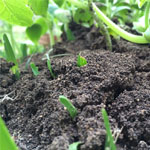 Which soil type is best for growing vegetables in Arizona? The vast majority of Mesa plants absolutely love gardening loam. Loam is a soil classification that means that the soil is a balance clay and sandy soil. This gives you the benefits of both and alleviates the drawbacks.
Which soil type is best for growing vegetables in Arizona? The vast majority of Mesa plants absolutely love gardening loam. Loam is a soil classification that means that the soil is a balance clay and sandy soil. This gives you the benefits of both and alleviates the drawbacks.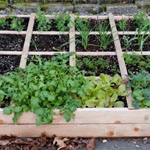 What’s the best size of vegetable garden to start with? – The size of your garden is a factor that you need to decide early on as well. Starting small is best for most people because a smaller garden is much easier to manage. Starting smaller affords you the opportunity to know how much time and effort goes into even a small amount of plants, which will let you know how big of a garden you can actually attend to adequately.
What’s the best size of vegetable garden to start with? – The size of your garden is a factor that you need to decide early on as well. Starting small is best for most people because a smaller garden is much easier to manage. Starting smaller affords you the opportunity to know how much time and effort goes into even a small amount of plants, which will let you know how big of a garden you can actually attend to adequately.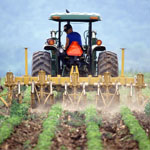 How do I prepare the ground for my Mesa vegetable garden? – Once you find the right plot for your garden you may have some work to do to properly prep it for planting. Sod may be on the plot you select and will need to be removed in order to be able to till the soil. Once you have removed the sod and tilled the soil, you can add organic compost, manure and planting soil before tilling a final time before starting the planting process.
How do I prepare the ground for my Mesa vegetable garden? – Once you find the right plot for your garden you may have some work to do to properly prep it for planting. Sod may be on the plot you select and will need to be removed in order to be able to till the soil. Once you have removed the sod and tilled the soil, you can add organic compost, manure and planting soil before tilling a final time before starting the planting process.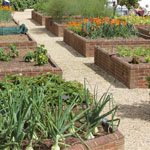 How do I control soil quality and watering better? – Another way to get started with your garden is to use
How do I control soil quality and watering better? – Another way to get started with your garden is to use  What vegetables grow best in Arizona? – The next factor to consider is which vegetable bearing plants can thrive in Arizona. The crops that are easiest to grow in AZ are green beans, herbs, peppers, sugar, snap peas, tomatoes, radishes, and carrots. Sticking to these varieties initially will not only set you up for success, it will give you valuable experience that will be much needed if you plan on branching out and growing varieties that are harder to foster in AZ. The best times of year to plant the seeds for the plants species listed above is between the months of November and March. Understand that around January frost becomes more likely and you should make sure your crops are covered so they do not become damaged or even die, due to frost exposure.
What vegetables grow best in Arizona? – The next factor to consider is which vegetable bearing plants can thrive in Arizona. The crops that are easiest to grow in AZ are green beans, herbs, peppers, sugar, snap peas, tomatoes, radishes, and carrots. Sticking to these varieties initially will not only set you up for success, it will give you valuable experience that will be much needed if you plan on branching out and growing varieties that are harder to foster in AZ. The best times of year to plant the seeds for the plants species listed above is between the months of November and March. Understand that around January frost becomes more likely and you should make sure your crops are covered so they do not become damaged or even die, due to frost exposure. Can I grow two crops of vegetables in Mesa? There is a unique advantage to growing vegetables in Arizona and that is the fact that many vegetables can have double growing seasons. The fact that you can double your yearly harvests in AZ means that you potentially grow twice as much produce and that can save you money on groceries while eating fresh produce almost year round. As your green thumb becomes established, your harvests will increase and become exponentially more plentiful. This article is about vegetables, but is should be noted that the same goes for fruit and having citrus growing year round will provide a great aroma to your property as the trees bud and bear fruit.
Can I grow two crops of vegetables in Mesa? There is a unique advantage to growing vegetables in Arizona and that is the fact that many vegetables can have double growing seasons. The fact that you can double your yearly harvests in AZ means that you potentially grow twice as much produce and that can save you money on groceries while eating fresh produce almost year round. As your green thumb becomes established, your harvests will increase and become exponentially more plentiful. This article is about vegetables, but is should be noted that the same goes for fruit and having citrus growing year round will provide a great aroma to your property as the trees bud and bear fruit.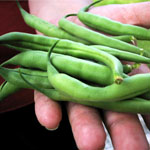 What’s the best vegetable to grow in Arizona? Green Beans are one of the best vegetables to grow in AZ. The soil in Phoenix is especially well suited to the growing of green beans. November is the recommended time of year to plant Green Bean seeds, just remember to cover the plants once frost becomes a threat. One option to avoid frost is to start the plants life indoors, moving them outside once the frost season has passed. You can also place tomato cages around your Green Bean plants in order to consolidate space in your garden. Sugar Snap peas are another vegetable that grows well in the same window. You can follow the same steps to avoid frost with Sugar Snap Peas that we mentioned using with Green Beans.
What’s the best vegetable to grow in Arizona? Green Beans are one of the best vegetables to grow in AZ. The soil in Phoenix is especially well suited to the growing of green beans. November is the recommended time of year to plant Green Bean seeds, just remember to cover the plants once frost becomes a threat. One option to avoid frost is to start the plants life indoors, moving them outside once the frost season has passed. You can also place tomato cages around your Green Bean plants in order to consolidate space in your garden. Sugar Snap peas are another vegetable that grows well in the same window. You can follow the same steps to avoid frost with Sugar Snap Peas that we mentioned using with Green Beans. Another vegetable that loves the long growing year in Arizona is Parsley. Parsley absolutely loves the Arizona climate and can thrive as much as you want it too. You may actually have to eventually limit the parsley as it can start to take over your garden. Planting in the springtime is recommended and once your plants begin to mature, you can have fresh parsley at the ready year round.
Another vegetable that loves the long growing year in Arizona is Parsley. Parsley absolutely loves the Arizona climate and can thrive as much as you want it too. You may actually have to eventually limit the parsley as it can start to take over your garden. Planting in the springtime is recommended and once your plants begin to mature, you can have fresh parsley at the ready year round. What types of seeds are best for beginners in Phoenix? For the beginner gardener it helps to have a type of seed that germinates quickly and is heartier. In Arizona, it is best to select seeds that have gestation periods of 60 days or less as they are the easiest to foster in the desert climate.
What types of seeds are best for beginners in Phoenix? For the beginner gardener it helps to have a type of seed that germinates quickly and is heartier. In Arizona, it is best to select seeds that have gestation periods of 60 days or less as they are the easiest to foster in the desert climate. What tools do I need to garden in Arizona? – Like most things in life the right tools for the job makes the job that much easier, and more fun. A good pair of gloves for the handling of prickly items, and also to offer a little protection from insects goes a long way. You’ll want a sturdy shovel for those pesky rocks and tougher soil that you might need to dig in to plant items with deeper root system, such as trees. Having a garden spade makes maintaining edges around flower beds and the preparation for installing raised garden beds much easier than using a rounded shovel edge.
What tools do I need to garden in Arizona? – Like most things in life the right tools for the job makes the job that much easier, and more fun. A good pair of gloves for the handling of prickly items, and also to offer a little protection from insects goes a long way. You’ll want a sturdy shovel for those pesky rocks and tougher soil that you might need to dig in to plant items with deeper root system, such as trees. Having a garden spade makes maintaining edges around flower beds and the preparation for installing raised garden beds much easier than using a rounded shovel edge. How do I water my vegetable Garden in Arizona? – Depending on the type of garden you plant and which vegetables you choose you will need different watering systems. But having an automated system makes it that much easier for the passionate gardener. You can get drip lines that put the water directly on the ground next to your vegetables instead of sprinklers, which are best suited for water lawns.
How do I water my vegetable Garden in Arizona? – Depending on the type of garden you plant and which vegetables you choose you will need different watering systems. But having an automated system makes it that much easier for the passionate gardener. You can get drip lines that put the water directly on the ground next to your vegetables instead of sprinklers, which are best suited for water lawns.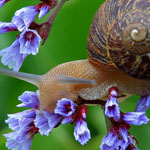 How do I keep pests away from your vegetable garden? – There are various kinds of pests you can encounter here in Arizona. Some will need professional removal, such as venomous snakes or scorpions. Contact a licensed professional that has the training and right equipment to remove such pests. For the rest of the insects and foraging animals you can use chicken wire or other types of fencing to keep them out. As for insects there are different kinds of sprays available at your local gardening shop.
How do I keep pests away from your vegetable garden? – There are various kinds of pests you can encounter here in Arizona. Some will need professional removal, such as venomous snakes or scorpions. Contact a licensed professional that has the training and right equipment to remove such pests. For the rest of the insects and foraging animals you can use chicken wire or other types of fencing to keep them out. As for insects there are different kinds of sprays available at your local gardening shop.
